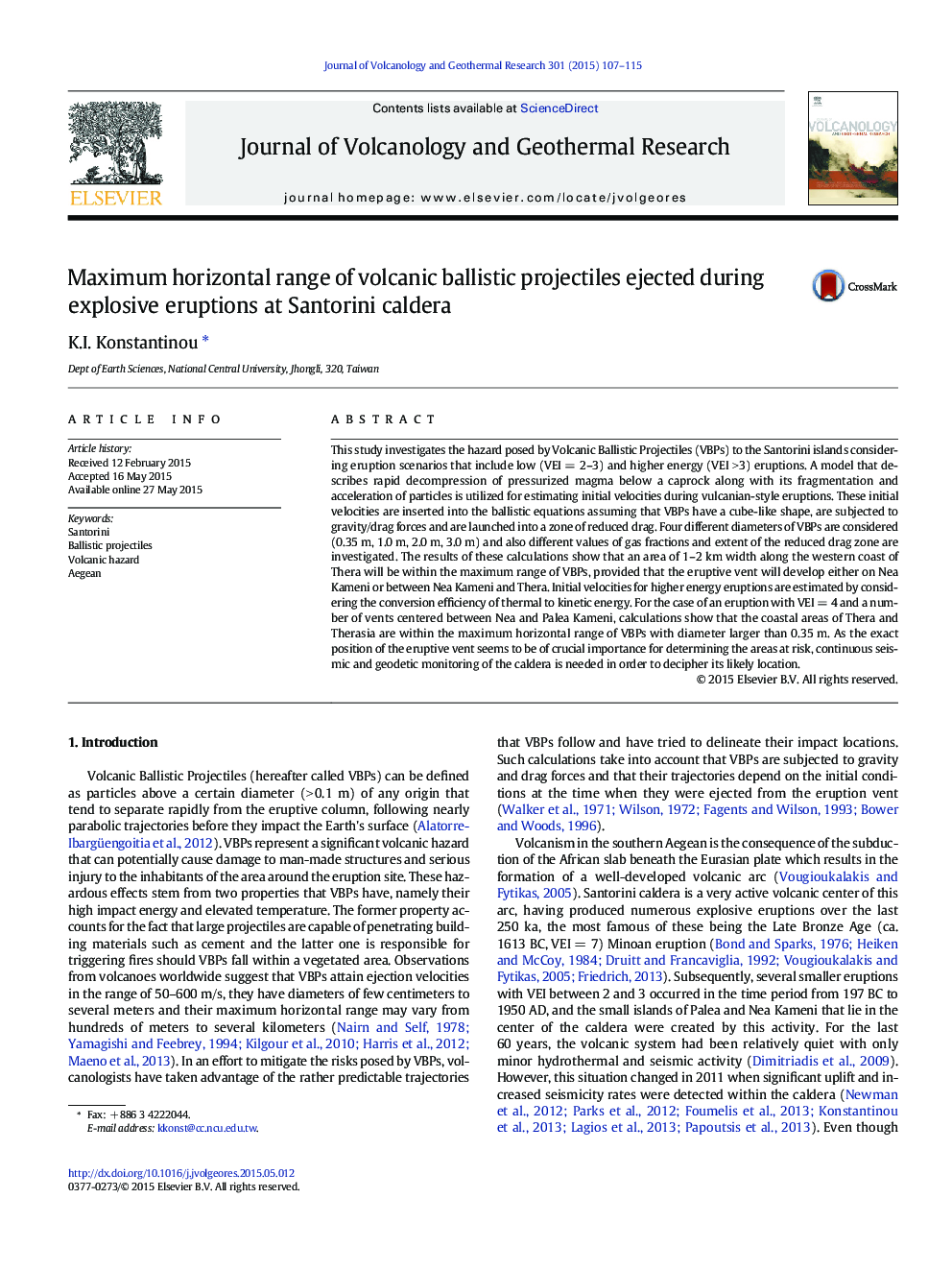| Article ID | Journal | Published Year | Pages | File Type |
|---|---|---|---|---|
| 4713117 | Journal of Volcanology and Geothermal Research | 2015 | 9 Pages |
•Volcanic Ballistic Projectiles (VBPs) is a significant hazard for Santorini.•VBPs horizontal range during vulcanian and larger eruptions is estimated.•VBP diameter and extent of reduced drag zone are the most important factors.•Coastal area of Thera from Imerovigli to Athinios may be within VBPs range.
This study investigates the hazard posed by Volcanic Ballistic Projectiles (VBPs) to the Santorini islands considering eruption scenarios that include low (VEI = 2–3) and higher energy (VEI > 3) eruptions. A model that describes rapid decompression of pressurized magma below a caprock along with its fragmentation and acceleration of particles is utilized for estimating initial velocities during vulcanian-style eruptions. These initial velocities are inserted into the ballistic equations assuming that VBPs have a cube-like shape, are subjected to gravity/drag forces and are launched into a zone of reduced drag. Four different diameters of VBPs are considered (0.35 m, 1.0 m, 2.0 m, 3.0 m) and also different values of gas fractions and extent of the reduced drag zone are investigated. The results of these calculations show that an area of 1–2 km width along the western coast of Thera will be within the maximum range of VBPs, provided that the eruptive vent will develop either on Nea Kameni or between Nea Kameni and Thera. Initial velocities for higher energy eruptions are estimated by considering the conversion efficiency of thermal to kinetic energy. For the case of an eruption with VEI = 4 and a number of vents centered between Nea and Palea Kameni, calculations show that the coastal areas of Thera and Therasia are within the maximum horizontal range of VBPs with diameter larger than 0.35 m. As the exact position of the eruptive vent seems to be of crucial importance for determining the areas at risk, continuous seismic and geodetic monitoring of the caldera is needed in order to decipher its likely location.
